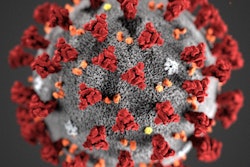
The European Society of Radiology (ESR) and European Society of Thoracic Imaging (ESTI) have released joint guidelines for identifying COVID-19 from patient CT scans.
The guidelines, which were published on 2 April in European Radiology, address common imaging questions, including the following:
- Which imaging techniques can be used when COVID-19 pneumonia is suspected and in COVID-proven patients?
- What are the main CT features of COVID-19?
- Who should benefit from CT and what information can be obtained?
- What protective measures should be taken for the staff?
- How should imaging departments organize to face the epidemic?
The advice offered in the paper includes the recommendation that CT should not be used in patients with no symptoms. It can help identify the severity of the disease for patients with dyspnea and desaturation, as well as for patients with milder symptoms who have diabetes, obesity, chronic respiratory disease, or other comorbidities.
Furthermore, the authors advise that chest radiography should not be a first-line method for detecting COVID-19 pneumonia because radiographs are not sensitive for detecting ground-glass opacities, a hallmark of the disease. Instead, radiographs should only be used for patients in intensive care units who cannot be sent for CT.
The authors also cautioned that chest ultrasound cannot differentiate between bacterial and viral pneumonia. The modality is best used at bedside for the diagnosis of complications or to help adjust mechanical ventilation or monitor pulmonary fluid load. It can also be used to scan other organs for likely definitive findings.



















